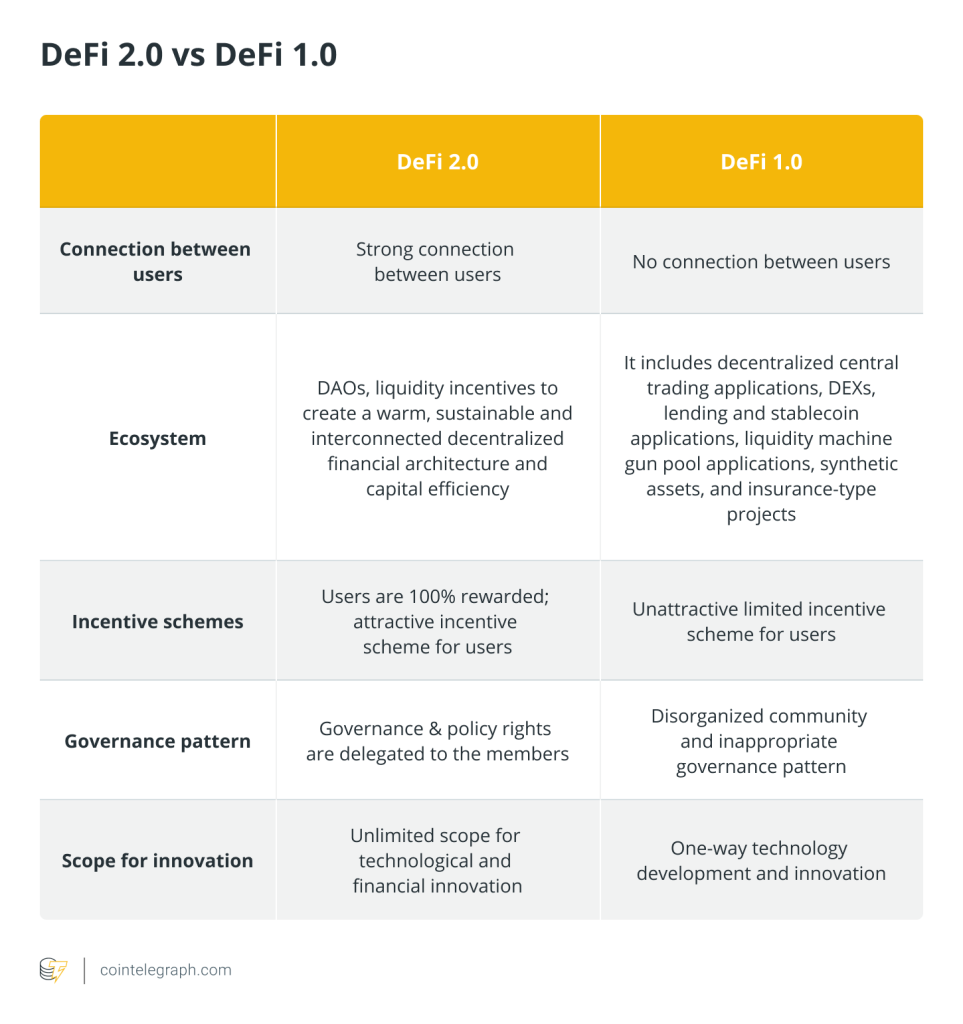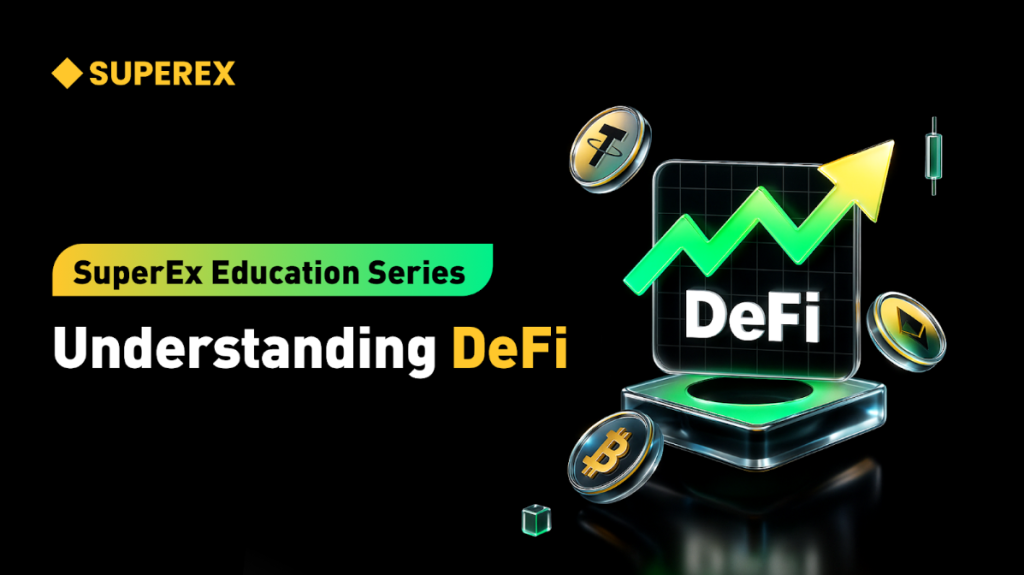What is Thrupenny?


Abstract
The Thrupenny Protocol is a novel DeFi ecosystem system, featuring an intelligent investment system and built-in derivative DEX among other ecosystem products.
The underlying technology principles of the Thrupenny Protocol primarily include liquidity management, interest rate mechanism, user interaction, loan health assessment management, and overall function adjustment mechanism of the protocol.
Thrupenny's DeFi ecosystem products mainly consist of the arbitrage bot automation system, asset management system, Thrupenny DEX, smart interest rate system, and active risk management scheme.
The ecosystem token of Thrupenny is TPY, which can be used as collateral on the Thrupenny lending platform, for staking and farming, and in ecosystem governance voting.
What is Thrupenny?
The financial system has undergone significant changes throughout history, from traditional finance (TradFi) to centralized finance (CeFi) and now to decentralized finance (DeFi), bringing about new and innovative ways to access financial services and manage capital.
Against the backdrop of profound changes in financial services, the Thrupenny Protocol has created a novel DeFi ecosystem system, equipped with a smart investment system and a built-in derivative DEX. It can address current issues in DeFi applications, such as high interest rate volatility, frequent unexpected liquidations, excessive over-collateralization, and substantial risks for liquidity providers. Thus, it offers more open and transparent, more decentralized, and more accessible financial services, enabling individuals and communities to access and control their financial resources. This bridges the gap between TradFi and the decentralized Web3 economy, promoting financial inclusiveness and democratization.
Design Principles of the Thrupenny Protocol
The Thrupenny Protocol employs a robust and complex financial model to support DeFi application procedures. Its key technology principles include liquidity management, interest rate mechanism, user interaction, loan health assessment management, and overall function adjustment mechanism of the protocol.
Liquidity Management
The liquidity management of Thrupenny is based on transparent market dynamics, where the interplay of supply and demand determines the valuation of TPY tokens. This method leverages the activity of traders and designated market makers to ensure that the token's price truly reflects the current market sentiment. The total liquidity of assets represents the available capital in reserves. By leveraging the organic movements of buying and selling in the market, Thrupenny creates a vibrant trading environment that naturally reduces slippage and fosters healthy ecosystem liquidity. Essentially, this liquidity is dynamically managed, reflecting ongoing borrowing, depositing, redemption, and repayment activities, thus ensuring continuous availability of user capital and market efficiency.
Interest Rate Mechanism
The interest rate mechanism of Thrupenny primarily determines borrowing interest rates based on utilization rates, which overall reflect the availability of capital in the pool. Specifically, borrowing interest rates consist of a base interest rate and a slope adjusted according to the utilization rate, operating differently depending on whether the utilization rate is below or above a predetermined optimal target. Interest rates are continuously updated based on real-time data; when capital is abundant, interest rates remain lower to encourage borrowing. Conversely, when capital is scarce, interest rates rise to promote loan repayment and new deposits. Additionally, options for floating and fixed interest rate loans offer flexibility to users.
Credit Scoring System
The Thrupenny platform also includes a credit scoring system, allowing users to assess the creditworthiness of potential borrowers before lending. This helps to reduce the risk for lenders and ensures that only borrowers with good reputations can access capital. The credit scoring system considers various factors such as the borrower's credit history, collateral value, and reputation on the platform. Users can view the credit scores of potential borrowers before lending, enabling them to make informed decisions about whom to lend to.
Loan and Liquidation Mechanism
Considering the volatility of crypto assets and market liquidity, Thrupenny employs an over-collateralization mode to buffer market fluctuations and price volatility. Its liquidation mechanism ensures the value of the collateral always exceeds the value of the loan, providing additional safety assurance for lenders. The liquidation process is fully automated, ensuring quick and effective execution.
The Thrupenny Protocol can further adjust risk parameters by modifying loan value, liquidation threshold, liquidation bonus, and reserve factor parameters. Moreover, Thrupenny DAO has the authority to vote on proposed protocol parameters, ensuring any adjustments reflect the collective wisdom of its users and are in line with current market dynamics to maintain the protocol's ongoing elasticity. Note: The health factor is used to assess the collateralization level of a loan. If the health factor is below 1, the loan is considered under-collateralized, and in such cases, liquidation procedures can be triggered to safeguard the platform's integrity.
User Borrowing Mechanism and Interest Accumulation
Thrupenny has designed a user-centric mechanism for easy interaction and customized borrowing. Users can open borrowing positions with either stable or variable interest rates, with the balance and interest compounding with each new transaction. Additionally, each user's overall stable interest rate is calculated across multiple loans, offering a personalized and dynamic lending experience.
Interest accumulation is managed through cumulative indices, with the liquidity index reflecting the interest over time on reserves, and the variable borrowing index reflecting the cumulative interest on variable borrowings. These indices are updated at each significant event, ensuring precise and real-time calculations. These measures ensure transparency in the interest calculation process and maintain the integrity of the financial system.
Thrupenny's DeFi Ecosystem
Currently, Thrupenny offers main DeFi ecosystem products including the arbitrage bot automation system, asset management system, Thrupenny DEX, smart interest rate system, and active risk management scheme.
Arbitrage Bot Automation System
The Thrupenny system introduces a no-code generation DeFi arbitrage bot, allowing platform users to easily adjust the bot's parameters and deploy it across various decentralized exchanges to find arbitrage opportunities. Once the bot identifies an arbitrage opportunity, the smart contract will execute the arbitrage trade and repay the flash loan amount, all within a single transaction for the user.
Asset Management System
The asset management system is an integrated yield farming mechanism which serves to incentivize liquidity providers (LPs) to contribute to the capital pool. This return distribution system allocates revenue generated on the platform to liquidity providers, providing the platform with necessary capital and liquidity.
Thrupenny DEX
Thrupenny DEX, based on the 0x agreement, allows users and agents to open derivative positions within the system to hedge risks.
Smart Interest Rate System
Thrupenny implements a smart contract-based interest rate swap (IRS) for interest rate derivatives, where interest rate swap with a floating-rate borrowing position can be used for net settlement of a fixed borrowing rate. This is used to stabilize interest rates and allows users to swap out their floating yields and lock in fixed yields.
Active Risk Management Scheme
A smart risk management contract programmed into the Thrupenny protocol will utilize derivative markets to hedge risk, interest rate risk, and currency risk, allowing individuals or financial institutions to only take on selected risks. The smart contract monitors open positions, interest rates, and collateral ratios to make calculated decisions on derivative positions.
Thrupenny Token Mechanism
The ecosystem token of Thrupenny is TPY, which possesses multiple practical functions: it can be used as collateral on the Thrupenny lending platform, for staking and farming, and in ecosystem governance voting. Additionally, it can be used to pay various service fees within the Thrupenny platform, such as transaction fees, loan interests, etc.
The total supply of TPY is 1 billion, of which 75% is allocated to the community and strategic partners, 8.33% for future development, 8.33% for operational costs, and 8.33% for the team. According to the project plan, TPY adopts a token burning mechanism, using a certain proportion of transaction fee and platform fee revenues to buy back and burn TPY tokens. This aims to create a healthy, sustainable positive cycle, ultimately burning 50% of all tokens, i.e., 500 million tokens will be removed from circulation.
Summary
In the crypto market, although the DeFi sector has developed earlier, it is still in its infancy compared to TradFi. There are many issues, such as high volatility in borrowing interest rates, frequent unexpected liquidations, excessive over-collateralization, and significant risks for liquidity providers. Thrupenny, through complex financial design in liquidity management, interest rate mechanism, user interaction, loan health assessment and adjustment, innovates to bridge the gap between DeFi and TradFi, fostering further growth and expansion of DeFi.






… [Trackback]
[…] There you can find 68303 more Information on that Topic: x.superex.com/academys/deeplearning/2009/ […]
… [Trackback]
[…] Here you will find 39702 additional Information on that Topic: x.superex.com/academys/deeplearning/2009/ […]
… [Trackback]
[…] Find More Info here to that Topic: x.superex.com/academys/deeplearning/2009/ […]
… [Trackback]
[…] Find More on on that Topic: x.superex.com/academys/deeplearning/2009/ […]
… [Trackback]
[…] Information to that Topic: x.superex.com/academys/deeplearning/2009/ […]
… [Trackback]
[…] Info to that Topic: x.superex.com/academys/deeplearning/2009/ […]
… [Trackback]
[…] Read More here to that Topic: x.superex.com/academys/deeplearning/2009/ […]
… [Trackback]
[…] Read More Info here to that Topic: x.superex.com/academys/deeplearning/2009/ […]
… [Trackback]
[…] There you will find 154 more Information to that Topic: x.superex.com/academys/deeplearning/2009/ […]
… [Trackback]
[…] Info on that Topic: x.superex.com/academys/deeplearning/2009/ […]
… [Trackback]
[…] Information on that Topic: x.superex.com/academys/deeplearning/2009/ […]
… [Trackback]
[…] Read More on to that Topic: x.superex.com/academys/deeplearning/2009/ […]
… [Trackback]
[…] There you can find 75204 additional Info to that Topic: x.superex.com/academys/deeplearning/2009/ […]
… [Trackback]
[…] Read More on to that Topic: x.superex.com/academys/deeplearning/2009/ […]
… [Trackback]
[…] Read More on that Topic: x.superex.com/academys/deeplearning/2009/ […]
… [Trackback]
[…] Find More to that Topic: x.superex.com/academys/deeplearning/2009/ […]
… [Trackback]
[…] Here you can find 29264 more Information to that Topic: x.superex.com/academys/deeplearning/2009/ […]
… [Trackback]
[…] Find More here on that Topic: x.superex.com/academys/deeplearning/2009/ […]
… [Trackback]
[…] Here you can find 92959 additional Info to that Topic: x.superex.com/academys/deeplearning/2009/ […]
… [Trackback]
[…] Information to that Topic: x.superex.com/academys/deeplearning/2009/ […]
… [Trackback]
[…] Info on that Topic: x.superex.com/academys/deeplearning/2009/ […]